If graphite mining has a home in Canada, it is surely in Quebec.
The earliest known producing graphite mine in the province, and possibly the country, was the Miller mine, situated in Grenville Township, 80 km west of Montreal.
It was worked in the mid-1800s and most of the graphite was used in then-modern technology as a dry lubricant, because folks understood that graphite would withstand heat better than oil-based lubricants.
Only a handful of graphite mines in La Belle Province have cycled in and out of production since ol’ Miller, but one has been in production for almost 30 years: the Lac des Îles mine, which was brought into production by Stratmin Graphite in 1989.
The venerable Lac des Îles — currently the only operating graphite mine in North America — is now owned by Imerys Graphite and Carbon, a division of the French multinational firm Imerys.
Benoit Gascon, the man who once helmed Stratmin, now leads Mason Graphite (TSXV: LLG; US-OTC: MGPHF) as its CEO.
Mason is developing the Lac Guéret flake graphite project in northeastern Quebec, 300 km north of Baie-Comeau.
The junior is one of a scattering of publicly traded companies in the province seeking to convert graphite projects into producing mines.
Mason Graphite “hopes to put into production and operate the second graphite mine in North America. There’s only one today, but it is close to being depleted,” Gascon said during a recent interview with BNN.
Gascon joined Mason after the firm bought Lac Guéret from Cliffs Natural Resources (NYSE: CLF) in 2012. He was familiar with the project after being part of an Imerys team that had done its due diligence on various graphite projects throughout the world.
Other Imerys team members included current Mason Graphite chief financial officer Luc Veilleux and vice-president of process development Jean L’Heureux.
“The team there has brought a (graphite) mine into production before in Quebec, and they actually have relationships with end users … and it’s all a relationship-based market, not a true commodity-type market. It’s more involved than a typical mining project,” says Ahmad Shaath, an equity research analyst with Toronto-based Beacon Securities.
Mason completed a feasibility study on Lac Guéret in 2015 and recently updated the numbers. The key to Lac Guéret is grade.
The reserves at Lac Guéret total 62.8 million tonnes grading 17.2% graphitic carbon, but the proposed operation would only mine 4.7 million tonnes, which would allow for an open pit at a head grade of 27.8% graphitic carbon, and a low stripping ratio of 0.8 to 1.
The feasibility study says the project could produce 51,900 tonnes of graphite concentrate annually for 25 years.
The current global market for flake graphite is 650,000 tonnes, with most production coming from China.
The cost per tonne in the feasibility rings in at $376, but Shaath’s model pegs cash costs at $425 per tonne.
He says at current graphite prices that should provide a margin of $1,000 to $1,100 per tonne, but it is rarely that simple.
“The tricky thing with graphite is that you’re not always guaranteed to get the flake distribution that you have in the ground. Some of the stuff you end up producing may have no value in the marketplace. It’s not like gold or copper, where you just produce it and sell it in the market. You need to be able to produce [graphite] at the specifications people want, and at the end of the day you need a basket of [graphite] products to realize a certain price that offsets your costs,” Shaath says.
Evidence of what Shaath is talking about can be found at Imerys’ nascent Otjiwarongo graphite mine in Namibia. During a recent conference in London, an Imerys spokesperson said graphite production has been slowed by problems related to “geology and processing.”
Similar teething problems are occurring as Syrah Resources (US-OTC: SYAAF) ramps up production at its mammoth Balama mine in Mozambique, which is capable of producing 350,000 tonnes of flake graphite annually.
Mason needs $200 million to build Lac Guéret. The junior already has 35 institutional shareholders on board, including Fidelity Investments and Quebec government-backed firms Ressources Québec; Caisse de dépôt et placement du Québec; and Fonds de solidarité FTQ.
The junior could also raise funds by selling some or all of its 25% stake in NanoXplore (TSXV: GRA), which bills itself as Canada’s largest producer of graphene powder for industrial use, and has a $115-million market capitalization.
(Graphene is a collection of atom-thick, two-dimensional layers of carbon arranged in honeycomb-lattice shapes. It is incredibly light, yet 200 times stronger than steel — possibly the most promising nano material yet, given its strength and that it conducts electricity better than any known metal).
Mason Graphite has 135.9 million shares outstanding and a $139-million market capitalization. The stock trades in a 52-week range of 91¢ to $3.15.
In mining, there is a saying that mostly holds true: the best place to look for a new mine is in the shadow of a head frame. While there is no headframe at Lac Guéret (especially given that any mining would be done via open pit), Mason Graphite now has a neighbour: Berkwood Resources (TSXV: BKR).
The junior is developing the early-stage Lac Guéret Extensions project, which borders Mason’s Lac Guéret to the east and south.
Berkwood holds a 100% interest the Lac Guéret East Block, consisting of 38 claims covering 20.5 square kilometres.
In May, Berkwood announced that eight of nine diamond drill holes intersected mineralization during the third drilling phase on Zone 1 at the company’s Lac Guéret South Project, which consists of 106 claims over 57 square kilometres.
One hole returned 17.37% graphitic carbon over 131 metres, with a true thickness of 88 metres.
Berkwood has drilled just over 4,000 metres on its claim blocks, and all 27 holes so far have hit graphite mineralization. Last year the company quintupled its landholdings in the area.
Berkwood has 39.7-million shares and trades in a 52-week range of 7¢ to 47¢ per share.
Focus Graphite (TSXV: FMS; US-OTC: FCSMF) is another junior with a high-grade flake graphite deposit.
The advanced-stage Lac Knife project is situated in an established iron mining district near Fermont in Quebec’s portion of the Labrador Trough, 500 km north of Baie-Comeau.
Lac Knife boasts an open pit reserve of 7.85 million tonnes grading 15.13% graphitic carbon for 1.19 million tonnes graphite (at a 3% graphitic carbon cut-off grade). The stripping ratio would be 1.26 to 1 during the first five years of production, then jumps to 1.7 to 1.
A 2014 feasibility study projected concentrate production of 44,300 tonnes annually at a cost of $441 per tonne. The average selling price used in the study was US$1,713 per tonne — well above current prices in the US$1,600- to US$1,800-per-tonne range.
Focus would need $170 million to build the mine, with pre-tax payback taking three years.
Pilot plant metallurgical tests from a 10-tonne bulk sample brought a 98% carbon graphite concentrate, with an average flake size greater than 200 mesh. The operation would ship concentrate to the deepwater port at Sept-Îles, Quebec.
In a corporate presentation in January, Focus president and CEO Gary Economo said the company looks to build a plant in Sept-Îles that would upgrade the Lac Knife concentrate for use in lithium-ion batteries, and other value-added applications.
The company has done some testing that shows natural-flake graphite used in anodes boosts the capacity of coin-sized, lithium-ion batteries. Most anode graphite used in lithium-ion cells comes from synthetic graphite made from petroleum coke.
The company trades in a 52-week range of 2–10¢, with 348 million shares outstanding.

A road on Lomiko Metlas’ La Loutre graphite property in Quebec. Credit: Lomiko Metals.
Lomiko Metals (TSXV: LMR), meanwhile, is working on its La Loutre property, 50 km east of Imerys’ Lac des Îles mine.
Drilling on La Loutre has outlined a National Instrument 43-101 compliant resource of 18.4 million indicated tonnes grading 3.19% graphitic carbon at a 1.5% cut-off grade. Another 16.7 million inferred tonnes grade 3.75% graphitic carbon.
The resource was calculated on the Graphene-Battery zone and does not include an intercept of 28.5 metres running 16.53% graphitic carbon on the property’s Refractory zone.
Lomiko also owns the Quatre Milles property, situated 175 km northwest of Montreal, near the village of Sainte-Véronique, Quebec. The wholly owned claim block covers 16.4 square kilometres. One drill hole in 2012 hit 70 metres running 2.17 graphitic carbon.
In recent years the company has shifted its focus from graphite to downstream pursuits, including mining cryptocurrencies. Lomiko owns 20% of Promethieus Cryptocurrency Mining, while Lomiko CEO Paul Gill owns another 42%.
Cryptocurrency “mining” involves compiling recent cryptocurrency transactions into blocks (better known as “blockchain”) and trying to solve a difficult puzzle. This requires a computer with a lot of horsepower and a full-time Internet connection.
One such computer — the Bitmain Antminer S9, for example — sells for $7,500, and Promethieus says earns a profit of 0.0283 per Bitcoin, or US$255 per month, based on 0.12 kWh.
Promethieus was launched to put a number of these computers to work mining cryptocurrencies.
Lomiko Technologies — wholly owned by Lomiko Metals — holds a 20% stake in SHD Smart Home Devices, an early-stage developer of automated energy-saving and home security products, and 40% of Graphene Energy Storage Devices, which does pretty much what its name suggests.
The market seems nonplussed about these endeavours. Lomiko has 40 million shares outstanding and a $2.6-million market capitalization. The stock trades in a 52-week range of 4¢ to 30.5¢.
Canada Carbon (TSXV: CCB) is developing the 100 sq. km Miller hydrothermal lump-vein graphite project, 80 km west of Montreal, on the same site that hosted the original Miller graphite mine in 1845.
A 2016 preliminary economic assessment on Miller outlines different mining phases. Phase one would see graphite, and what the company calls architectural-grade marble, extracted from three open pits on the Miller property.
The two graphite pit shells contain a combined resource of 920,000 inferred tonnes grading 2% graphitic carbon, at a 0.8% cut-off grade, for a total of 19,000 tonnes contained graphite.
The Marble pit contains 1.5 million inferred tonnes grading 0.82% marble, at a 0.6% cut-off grade, for 1.52 million inferred tonnes marble. The Marble pit also hosts 1.2 million inferred tonnes grading 0.53% graphitic carbon, at a 0.4% cut-off grade, for a total of 6,200 inferred tonnes.
The PEA suggests the operation could produce 150,000 tonnes of architectural marble annually, which would sell for $184 per tonne and cost $54 per tonne to produce.
Canada Carbon would build a flotation plant at Miller and another thermal treatment plant at its Ashbury site, 150 km northwest. Using a proprietary thermal treatment process, the operation would produce 1,500 tonnes of thermally treated graphite annually. Treated graphite grades using the proprietary process have reached 99.9995% to 99.9998% graphitic carbon.
The PEA estimates Miller’s total life-of-mine capital costs at $50 million, including the thermal upgrading plant at Ashbury.
The company hopes its high-purity, “nuclear-grade” graphite can be used in pebble bed nuclear reactors. Canada Carbon says nuclear-grade graphite could fetch as much as US$18,0000 to US$35,000 per tonne, while the costs per tonne of its refined graphite are modelled at $8,666 per tonne in the PEA.
The high-purity graphite could also be used in aerospace applications and electronic devices, such as laptops and smartphones.
Shares in Canada Carbon trade in a 52-week range of 4–17¢. It has a $10.6-million market capitalization, with 106 million shares outstanding.
Other graphite companies operating in Quebec include Saint Jean Carbon (TSXV: SJL; OTCQB: TORVF) and its Bell, Walker and Clot Clump projects in the province’s south; and Nouveau Monde Graphite (TSXV: NOU; US-OTC: NMGRF) and its Matawinie project, north of Montreal.
—Based in Toronto, Brian Sylvester is a freelance business writer specializing in mining.

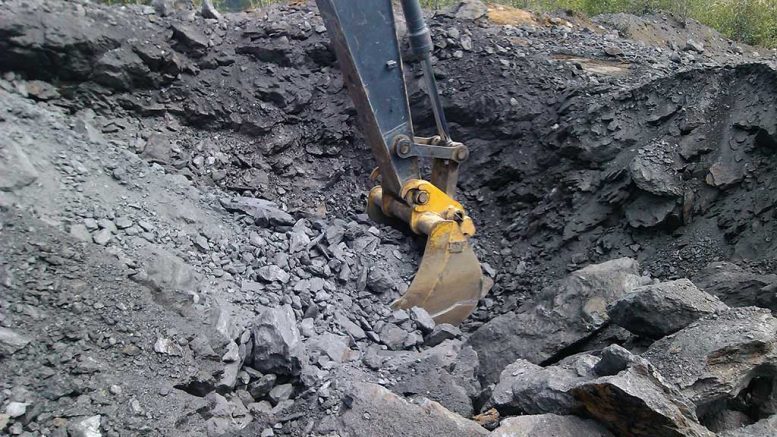
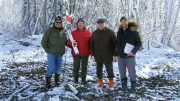
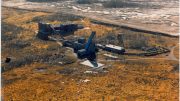
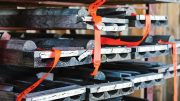
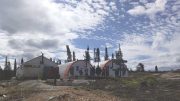
Be the first to comment on "Mason Graphite’s Lac Guéret leads the field in Quebec"